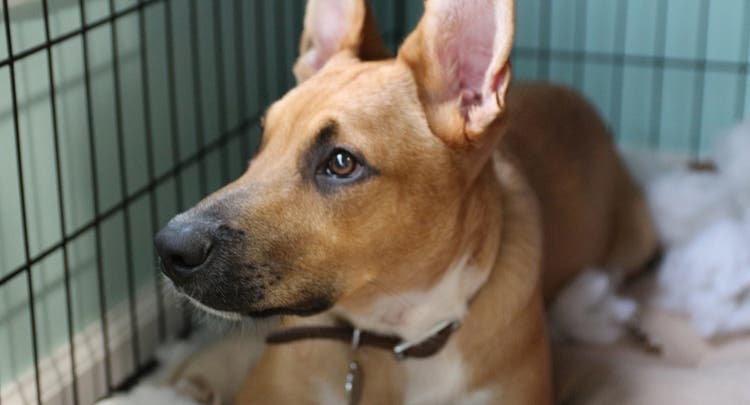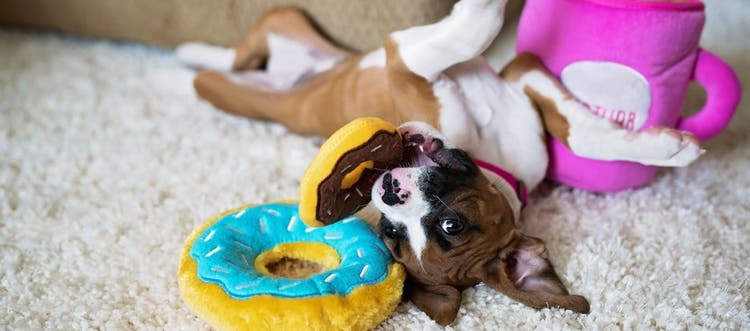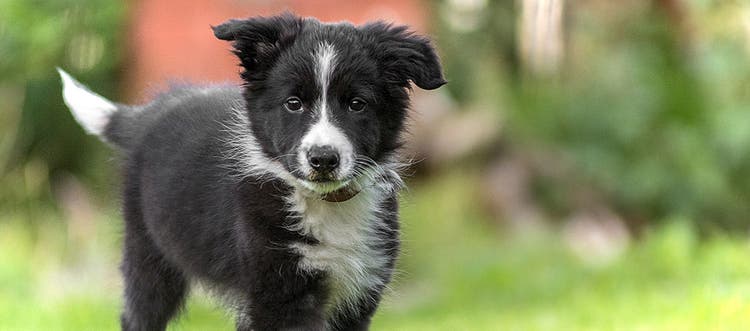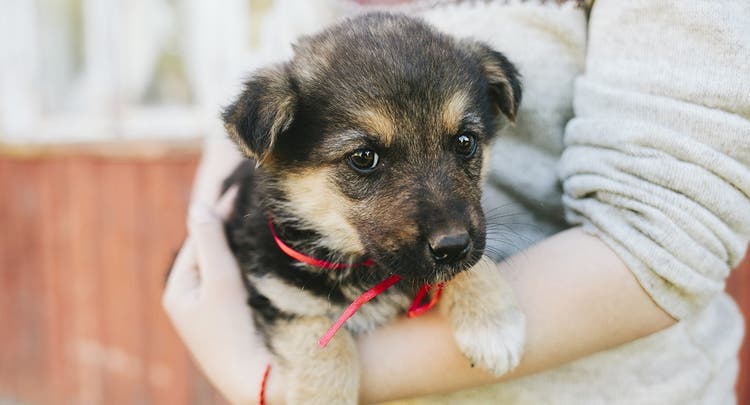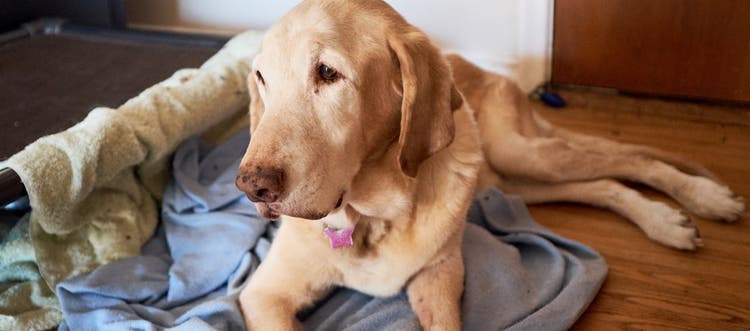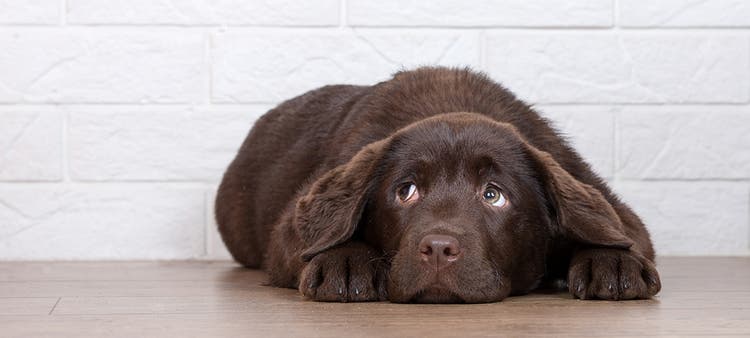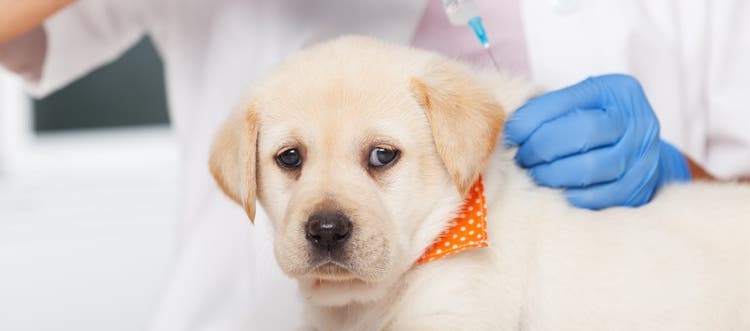Wondering where to start when housetraining your puppy? Check out these 8 essential steps.
Welcoming a new puppy into your life is an exciting, albeit complicated, undertaking. How can you make sure you’re starting off on the right paw? Often, the best lifelong relationships between dog and owner begin with successful potty training and obedience training. This may seem like a daunting task, but it doesn’t have to be!
Learning how to potty train a puppy is as simple as following our helpful guide of do’s and don’ts.
Tips for Potty Training a Puppy: Getting Started
Tip 1: Begin with Crate Training
Many trainers recommend potty training a puppy with a crate. Dogs are den animals by nature, and providing them a safe space of their own can be key during the potty-training process. This is because most dogs don’t like to soil the areas where they live and sleep. Think of crate training your dog as the first introduction to complete house training.
DO’S | DON’TS |
|
|
Tip 2: Determine a Designated Potty Spot
Decide ahead of time where you plan to take your puppy outside to go potty. This way, you and your pup will both know the designated place for them to do their business.
While potty pads are an option for in-house potty spots, most experts advise against their use as they reinforce the idea that eliminating in the house is OK. Instead, your goal is to teach your puppy to relieve themselves outside, not inside. By picking one spot outside your home and going to it each time you take your puppy out, they will begin to associate that spot as theirs.
If they don’t relieve themselves while you’re outside, return them to their crate and repeat the process in 10-15 minutes. Many pups get distracted easily and may not potty on the first try. By sticking to a routine and reinforcing the designated potty spot, your puppy will begin to make the association.
DO’S | DON’TS |
|
|
Tip 3: Create (and Stick to) a Puppy Potty Training Schedule
Potentially the most crucial step to effective potty training is the creation and adoption of a consistent schedule. Like human kids, puppies thrive on a set routine. By creating a schedule that both meets the needs of your potty-training puppy and your own life, you set expectations you can both meet.
In general, trainers recommend taking your puppy out every 30-45 minutes from the start. From there, you’ll get a better idea of your puppy’s individual ability and can adjust accordingly. You may have heard the well-adopted concept of one hour per one month of age. For example, if your puppy is two months old, they can reasonably be expected to hold it for two hours between potty breaks. However, this is not a finite rule, and you may need to adjust for your dog.
Make sure your schedule includes feeding times, potty breaks, designated crate time, play time and bedtime. Once you’ve created your schedule, print it out and post it in a central spot of your home so everyone in the household is aware and can assist.
DO’S | DON’TS |
|
|
Tips for Potty Training a Puppy: Keeping the Momentum
Tip 4: Choose a Verbal Cue
Adopting one verbal cue to initiate the potty process creates training recall in your new puppy. This cue can be as simple as, “Go potty.” It’s simply a word or phrase your puppy can begin to associate with when and where they’re supposed to relieve themselves.
DO’S | DON’TS |
|
|
Tip 5: Praise, Reward, Repeat
Once your puppy does their business when and where they’re expected to, make a fuss. Praise them and reward their attention. Positive reinforcement has been shown to go a long way in the training process of many animals, dogs included.
DO’S | DON’TS |
|
|
Tips for Potty Training a Puppy: Troubleshooting
Tip 6: Learn the Signs Your Puppy Needs to Go
Every puppy has their own unique signs of needing to go out that may include whining, scratching, pacing or circling. Learning your dog’s signs helps you stay ahead of potential accidents, and allows you to note any tendencies your dog may have and adjust your schedule accordingly.
DO’S | DON’TS |
|
|
Tip 7: Address Accidents
Long gone are the days of rubbing your puppy’s nose in their mess to punish them. Dogs simply don’t make the connection. So, if your puppy has an accident in the house, quickly redirect them outside to the designated spot and then return to the house and clean up the mess. Use a cleaner that also removes the smell. If you don’t, your puppy is more likely to return to that spot the next time they need to go.
Then, look at your schedule and evaluate. Was this accident a few minutes shy of a scheduled potty break? Did you mistakenly skip a scheduled potty break or not notice their pacing or circling? Adjust the schedule if needed, and make sure to keep an eye out for your pup’s potty cues.
DO’S | DON’TS |
|
|
Tip 8: Have a Plan for Inclement Weather
Many dogs dislike going outside in the rain or snow, making consistent potty training in inclement weather difficult. Do what you can to make accessing and using their designated potty spot as comfortable as possible. That might involve the use of an umbrella in the rain or shoveling a walkway to their spot in the yard after heavy snowfall. Some trainers recommend additional praise or treats for successful bathroom outings in bad weather.
DO’S | DON’TS |
|
|
Potty training a puppy doesn’t have to be difficult. Doing a little prep work ahead of time and ensuring everyone working with the puppy is on the same page will go a long way. Likewise, creating a consistent routine and a comfortable, positive environment will set your puppy up for success.
